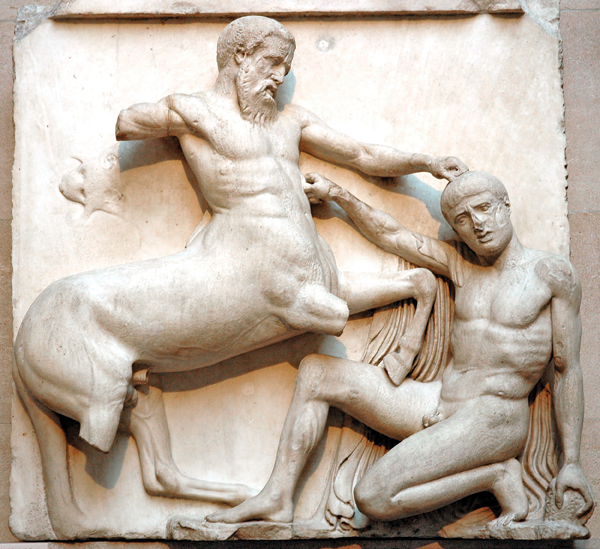
When I proposed a column to BAR editor Hershel Shanks on the issue of repatriation of artifacts to the country of origin, he said it was not something that engaged him. It didn’t matter to him, he said, where an artifact was located as long as it was available to scholars to examine and study, and was available to the public to see and appreciate. But Hershel is wrong. There is more to it than this. The real problem with repatriating artifacts is the sacrifice of one country’s history for the sake of another.
Western nations need to begin protecting their own histories, especially as requests for repatriation become more and more frequent. Greece, which desires the return of the Elgin Marbles, housed in the British Museum since 1816, has opened a new Acropolis Museum in Athens so the Marbles will have a proper home if they return. Zahi Hawass, now Egypt’s minister of antiquities, has for years discussed a list of six major pieces of Egyptian art that he would like to see brought back to Egypt (see sidebar). Arguments fly back and forth regarding the legality of England’s ownership of the Marbles and the legality of Berlin’s ownership of a bust of Nefertiti, one of the items on Hawass’s list.

But museums in Western countries quite reasonably want to retain their centuries-old collections. The arguments they use against repatriation often suggest that local governments and museums would not be able to properly steward certain artifacts as well as they can. These arguments are often dismissed as condescending, but they should be considered in light of the extreme economic instability in Greece and its lack of funding for even basic archaeological preservation, as well as the revolution in Egypt, which led to some damage of the Egyptian Museum in Cairo, the disappearance of artifacts, and the looting of archaeological sites and storage facilities throughout the country.
But the real problem with repatriation is the loss of history. When we repatriate artifacts to nations such as Greece and Egypt, we simultaneously destroy the evidence of the more recent history of other countries, including Britain, France and Germany. When archaeological teams from these Western European countries excavated in Ottoman lands in the 19th century, they were doing so because of the possibilities afforded them by the politics of the day. Some of that has since been labeled colonialist, but regardless of labeling, for several hundred years many Eastern countries were not interested in digging up their own history and were usually willing to give permits to Westerners, who craved knowledge of the “Orient.”
Under the terms of most Ottoman firmans (royal decrees or permits), significant archaeological materials were allowed to leave the country with the permission of the local government. Even after the fall of the Ottoman empire, partage agreements, which divided up the finds between the country or institution that excavated and the local government, remained common. The current regimes of some of these countries certainly have different priorities from previous governments, but that does not de-legitimate agreements made in the past. Certainly Egypt and Greece are entitled to write new chapters in their history, but they cannot pretend the past did not unfold the way it did.
A good example comes from Israel: The Siloam tunnel inscription, found in Jerusalem’s well-known Biblical-period waterworks in the City of David, has always been housed in the Istanbul Archaeology Museum. The tunnels were cleared by the British when Palestine was under Ottoman control, and the inscription itself was illicitly removed from the tunnel by locals, recovered by the British and finally brought to Istanbul.a Should this inscription be returned to Israel, even though Israel was not yet a state when it was excavated? (The Israeli government suggested this in 2007, and Turkey rejected the request.)
The ancient and modern history of two well-known artifacts shows the absurdity of carrying repatriation claims to their natural conclusion. First is the Rosetta Stone, discovered in Egypt by a soldier in Napoleon’s army. Should that go back to Egypt as Dr. Hawass wants? Perhaps instead, the French should demand that the Rosetta Stone be returned to France, as the British army took it from French hands when they forced Napoleon’s troops out of Egypt in 1801!
Even more telling is the history of the Law Code of Hammurabi. This 4,000-year-old law code, inscribed on a tall diorite stela, is famous for containing Mesopotamian laws that parallel many of those in the Bible. Hammurabi’s Code is housed in the Louvre in Paris, because French archaeologists excavated it in the ruins of ancient Susa in Persia (now Iran). The Code was written around 1800 B.C.E. by the Babylonian king Hammurabi, who displayed it publicly in the city of Sippar (in modern Iraq), a religious center not far from Babylon, his capital. The stela remained in Sippar for some 600 years, until the 12th century B.C.E., when the Elamites, an ancient nation located within what is now Iran, declared war on Babylonia and carried it off to Susa as war booty. There it lay, until the French archaeologists found it and brought it, with permission, to the Louvre.
If Hammurabi’s Code were to be repatriated today, where would it go? Should it go to a museum in Iran since it was excavated there in modern times? Or should it go to Iraq, where it was manufactured and spent its first half-millennium? As we try to erase the history of European Orientalism and colonialism, should we also erase the physical evidence of the Elamite-Babylonian conflict?
Artifacts are not people, and as such, cannot be in exile. Many artifacts have only known one home since they were dug up, and for many of them that home is in a Western museum. To take the artifacts out of museums is to degrade the history of Europe and the West.
MLA Citation
Footnotes
Hershel Shanks, “Please Return the Siloam Inscription to Jerusalem,” BAR 17:03.

